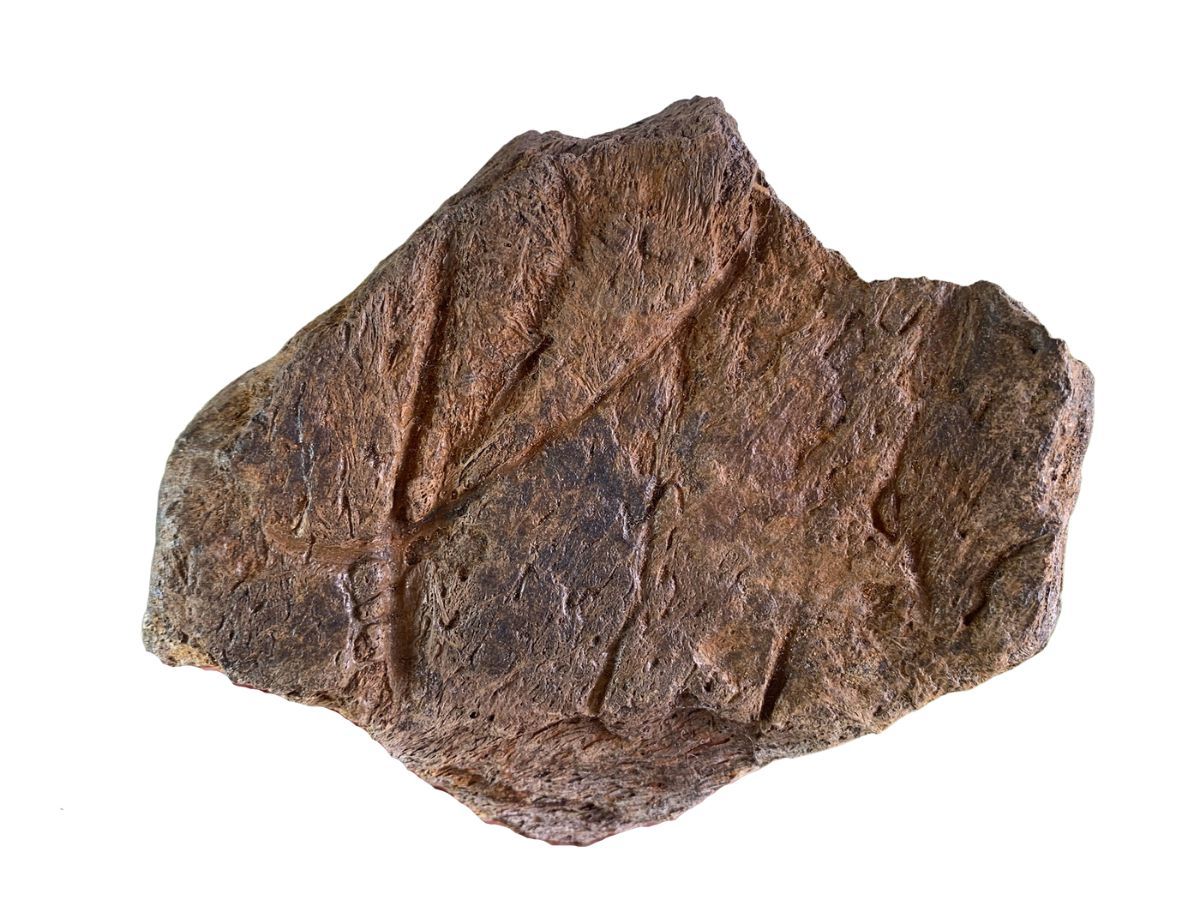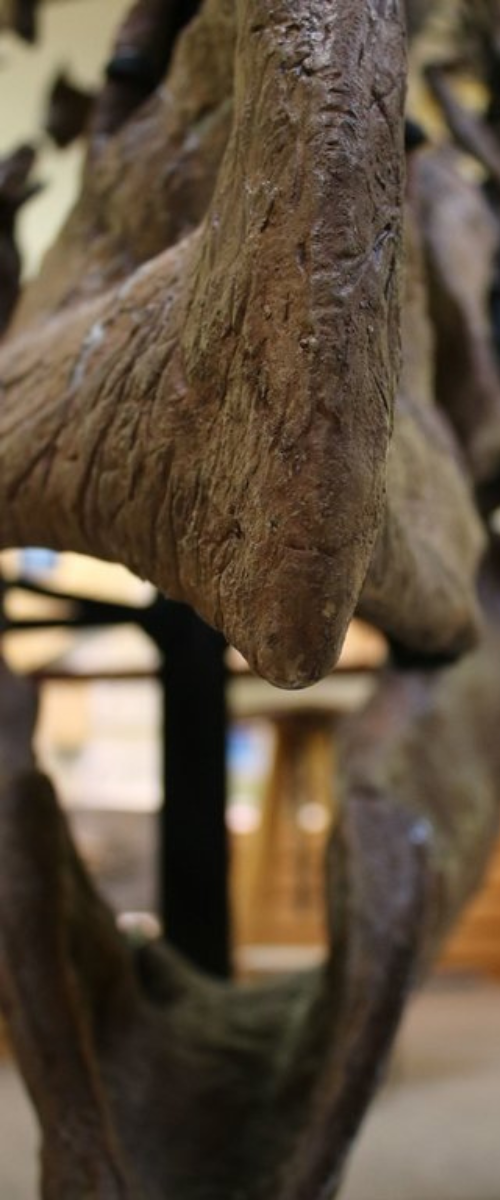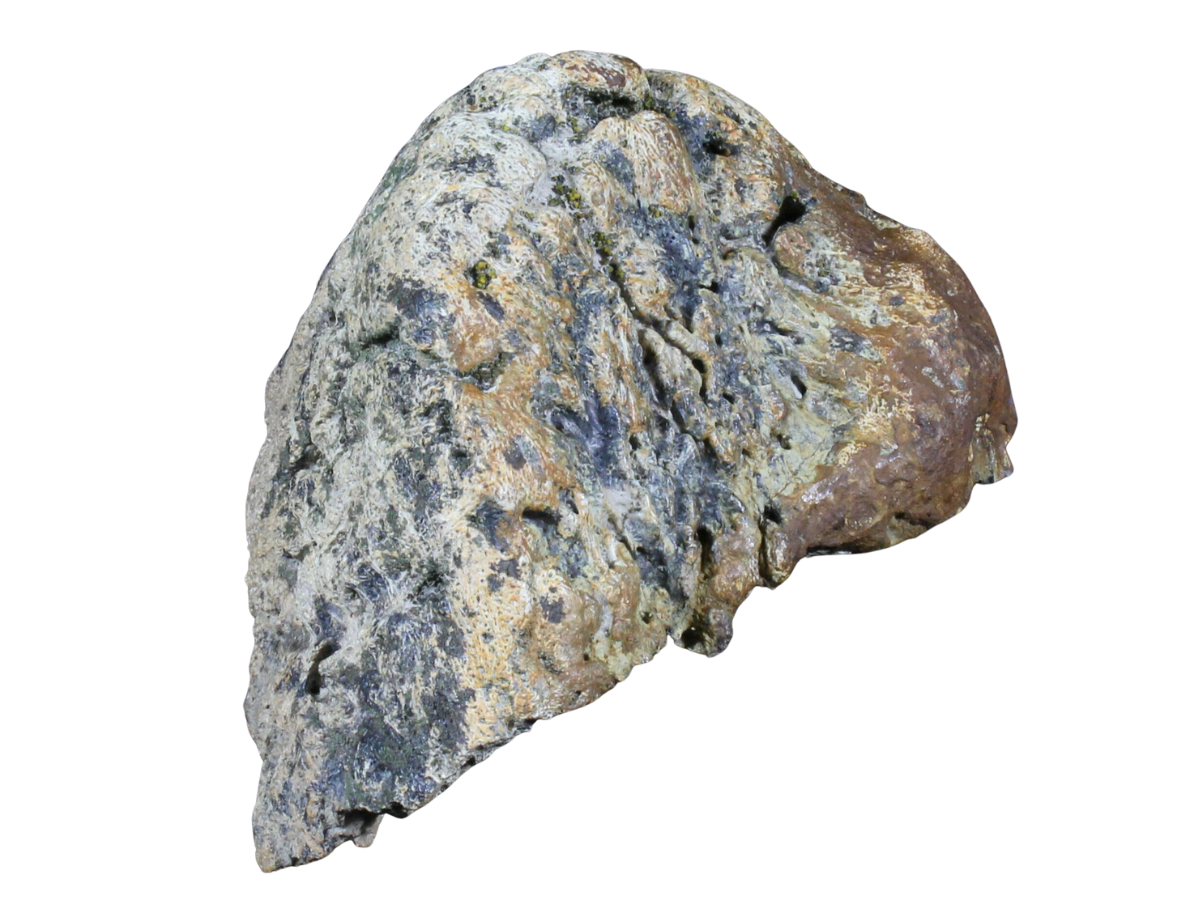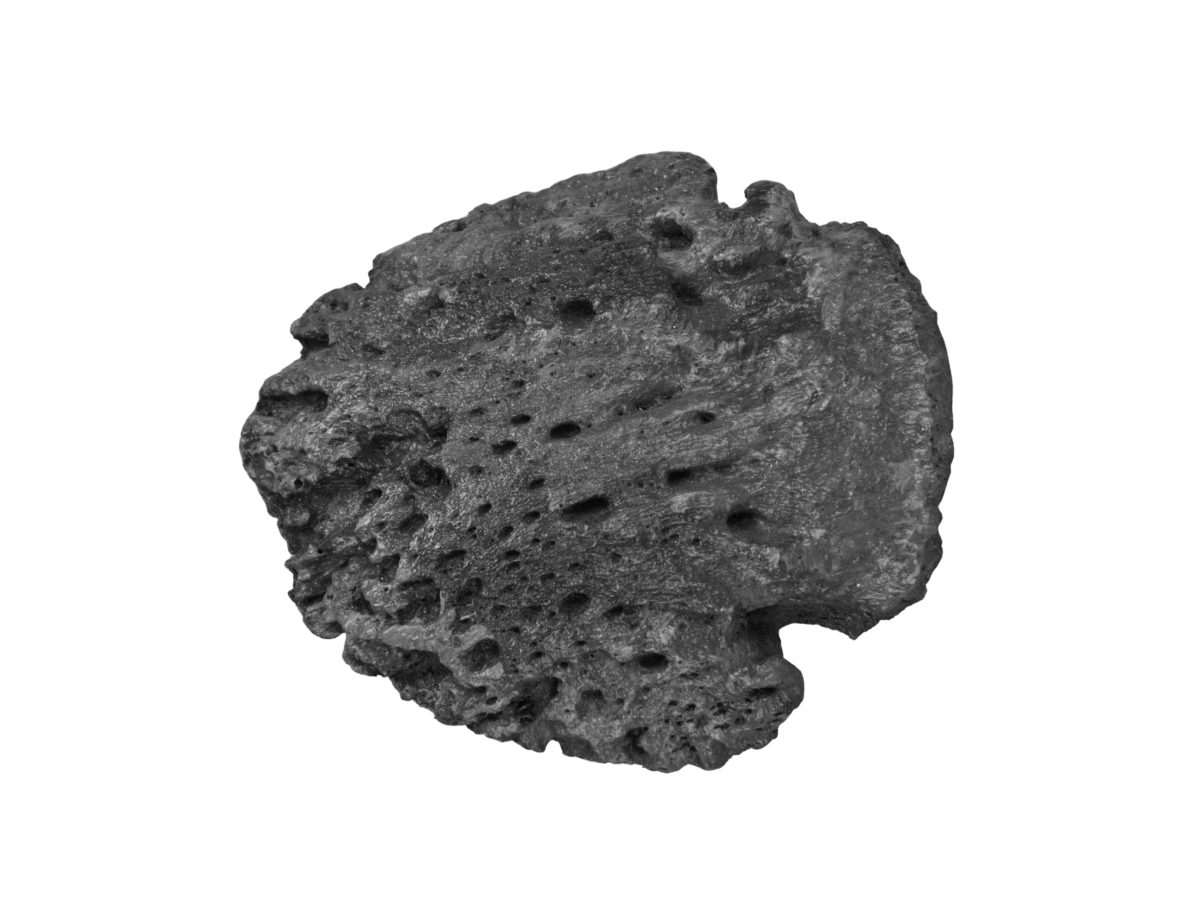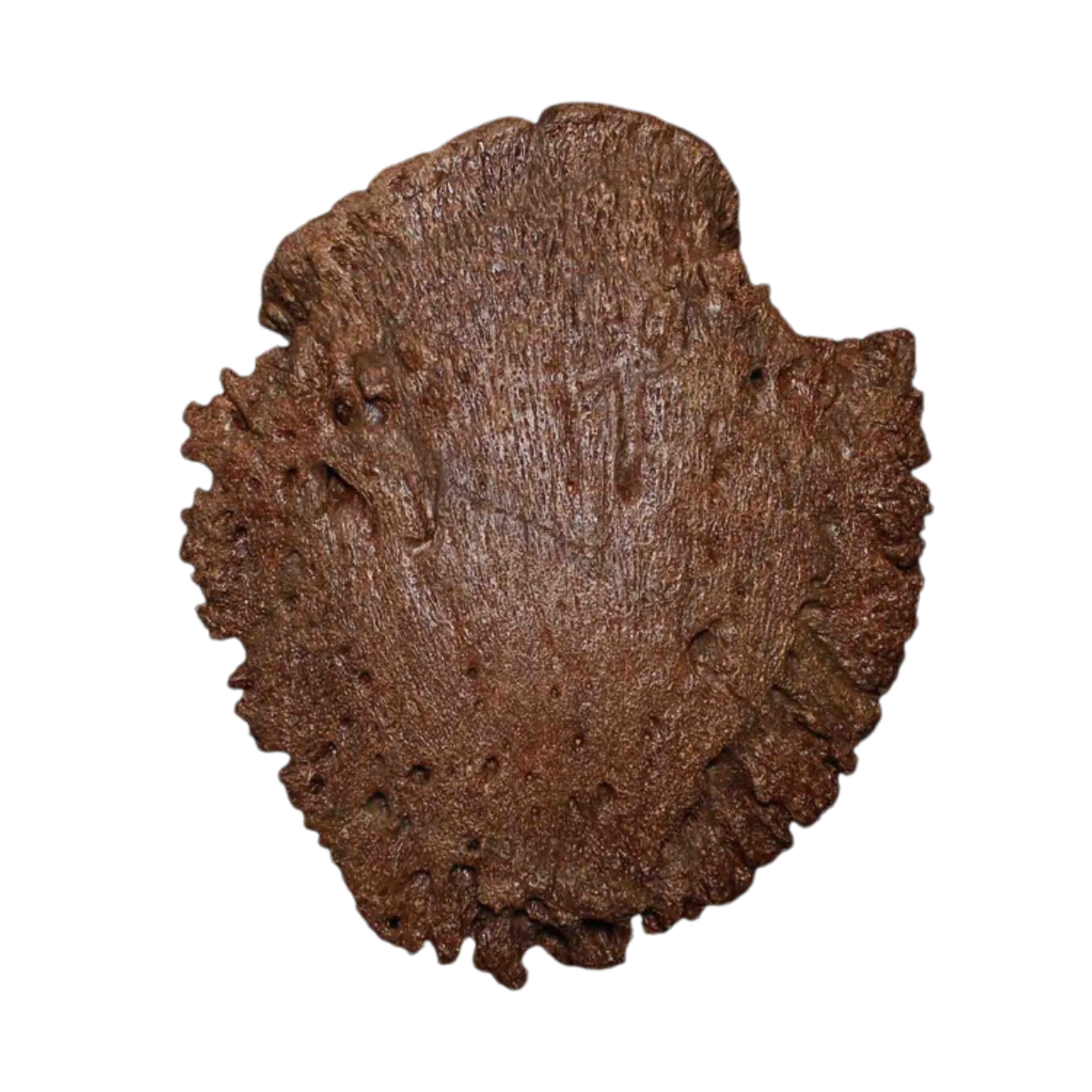
triceratops
A guide to identifying triceratops fossils
Triceratops was a large herbiverous dinosaur, which lived in mordern day North America during the Late Cretaceous period. At the time the climate was mild, with no prolonged annual cold, and Triceratops likely lived in dry, forested areas and plains where ferns, cycads and palms were plentiful.
Triceratops was one of the last non-avian dinosaurs to walk the Earth before the K-T extinction event 65.5 million years ago. It was the dominiant herbivore of its time and from the fossil record we know it made up around five sixths of the large dinosaur fauna alive at the time.
Since its discovery, seventeen species of Triceratops have been named, however only two are considered valid today; Triceratops horridus and Triceratops prorsus.
Triceratops is perhaps most famous for its horns and its enourmous frill. There have been multiple theories as to the function of its frill, the primary ones being that it was used for combat or courtship display. It is now mostly agreed that the latter was its primary function.
Its skull also housed an impressive number of teeth, between 400 and 800 in total. It replaced these throughout its life, which accounts for the fact such a large number of worn Triceratops teeth found in the Hell Creek and Lance Formations.
Where are Triceratops Fossils Found?
Trieratops fossils are found in several North American states and in several Late Cretaceous rock formations. Most of those available to collectors online or in fossil shops come from the Hell Creek and Lance Formations.
Triceratops lived alongside several other well known dinosaurs, such as Ankylosaurus, Pachycephalosaurus, Edmontosaurus and Tyrannosaurus rex. It also shared its habitat with other ceratopsians, including Leptoceratops, Torosaurus and possibly others, yet to be described.
Torosaurus was once considered to be a mature form of Triceratops, however it is now mostly agreed to be a valid genus. Isolated teeth and bones from the two animals are difficult, if not impossible, to tell apart, however Torosaurus fossils are far rarer, so it's common practice among collectors and museums to label Hell Creek and Lance Formation ceratopsian teeth and bones "Triceratops". This makes sense when you consider over 2,000 quality Triceratops specimens have been collected from the American West, while only 7 partial Torosaurus skulls have ever been discovered.
Leptoceratops, while also a ceratopsian, grew to only a couple of meters in length and looked very different to its larger cousins.
Here is a recent estimate of the proportions of the eight most common dinosaurian familes found in the Hell Creek Formation. As you can see, Ceratopsians (of which almost all are Triceratops) make up the vast majority of dinosaur fossils found in Hell Creek.
- Ceratopsidae 40%
- Tyrannosauridae 24%
- Hadrosauridae 20%
- Hypsilophodontidae 8%
- Ornithomimidae 5%
- Ankylosauridae 1%
- Pachycephalosauridae 1%
- Troodontidae 1% (represented only by teeth)
- Dromaeosauridae 1% (represented only by teeth)
IDENTIFYING TRICERATOPS TEETH
Triceratops had several hundred teeth, arranged into groups called batteries. There were 36 to 40 columns of teeth, with 3 to 5 stacked teeth per column. When the upper most tooth became worn down through feeding wear, it would be ejected and replaced by the tooth beneath. These worn teeth are known as "spit teeth" and are common finds in the Hell Creek and Lance Formations.
Triceratops teeth were adapted for chewing through tough vegetation. A tooth which has not been worn down through feeding wear will have a leaf shaped crown with a serrated edge. Each tooth has two roots, however most teeth are found missing one of their roots. Unworn teeth are quite rare, far more common are worn "spit" teeth, which have been shed by the animal. The images below give you a good idea what Triceratops teeth look like with various degrees of natural feeding wear. As each animal shed many teeth over the course of their lives, they can be very affordable for new collectors, while unworn teeth (which would have been in the animals jaw at the time of death) are sought after by many collectors.
Identifying triceratops skull bones
Triceratops skull bones are another common find in the late Cretaceous beds of North America. Triceratops skull bones are often easily identified thanks to their unique shape and texture. Below are some descriptions of various parts of a Triceratops skull, with images to aid identification.
triceratops frill
Triceratops frill has some unique characteristics that make even relitively small chunks easily identifiable. In life, Triceratops frills were covered in a sheath which required a supply of blood. Triceratops frill bones have grooves snaking across their surface which once housed blood vessels supplying blood to the surface.
Triceratops epoccipitals
Triceratops epoccipitals are the bones lining the outter edge of a Triceratops frill. Epoccipitals began as seperate bones, but fused to the frill as the animal matured. They also changed shape over time, being pointed early in life and flattening as they fused. These bones were for ornamentation and may have helped differentiate between species. Below are two images of epoccipitals, one from a younger animal (pointed) and one from a mature animal (flat).
Triceratops horns
Triceratops horns are easily identifiable and, like their frills, also have grooves snaking across their surface. The two brow horns are long and pointed, while the nose horns are much shorter and more stout. Pieces of horn are not too uncommon but whole horns are far rarer.
Triceratops Occipital condyle
The occipital condyle was a ball-like bone positioned at the back of the skull. It articulated with the animal's first cervical vertebra, allowing the skull to pivot and move around.
Due to their unique shape, they are easily identifiable and are occasionally found in the field and offered to collectors.
Triceratops Beaks
Triceratops had a bird like beak, used to grasp and pluck tough vegetation. Here are some images of the rostral (upper beak) and predentary (lower beak) bones. In life they would have been covered in a keratin sheath and both beaks feature strong vasulature (blood grooves) over the bone surface.
Triceratops Predentary (lower beak)
Triceratops rostral (upper beak)
Two of the images below (the skull with a cast beak) are of Torosaurus, but they are a good reference for Triceratops rostral bones. Found in isolation, it would be impossible to differentiate between the beak of a Triceratops and Torosaurus, but as was mentioned previously these bones are typically labelled "Triceratops" by collectors and museums, as Torosaurus remains are very rare.
triceratops unguals (claws)
Triceratops or edmontosaurus ungual?
Edmontosaurus, a hadrosaurid, is found in the same deposits as Triceratops and has similar shaped unguals, however Edmontosaurus unguals are smooth (aside from some pitting near the outer egde) and lack the heavy pitting and holes seen on Triceratops unguals.







